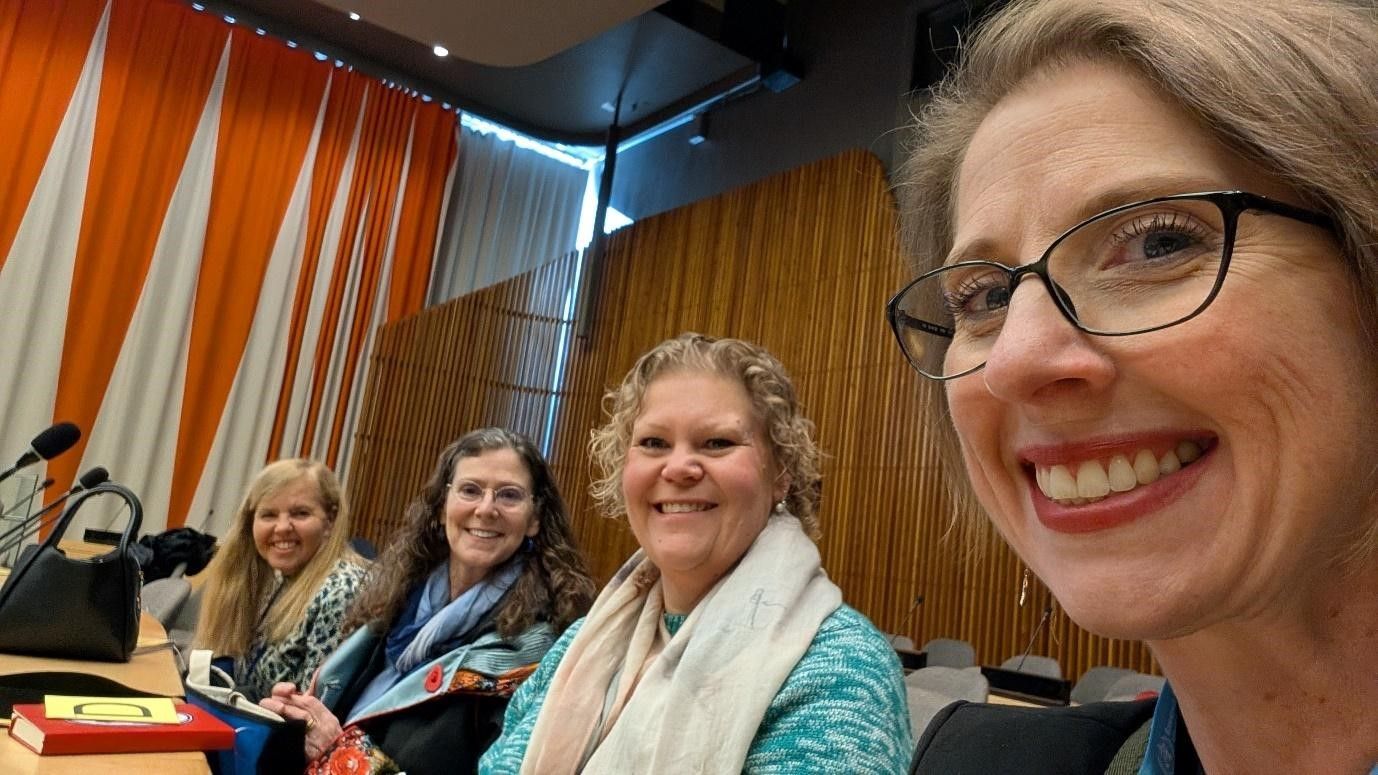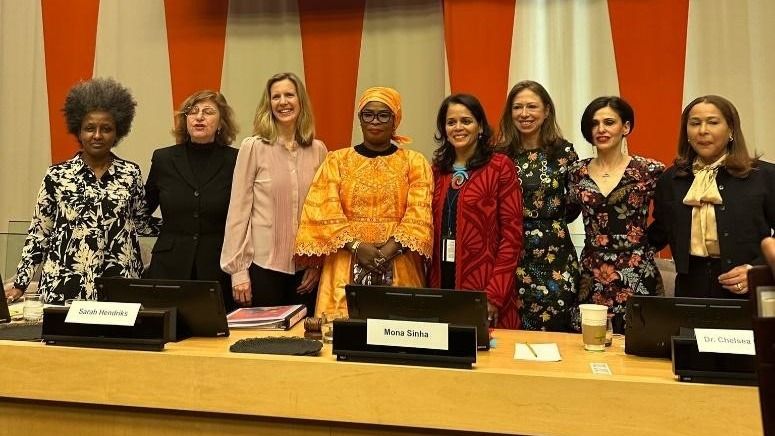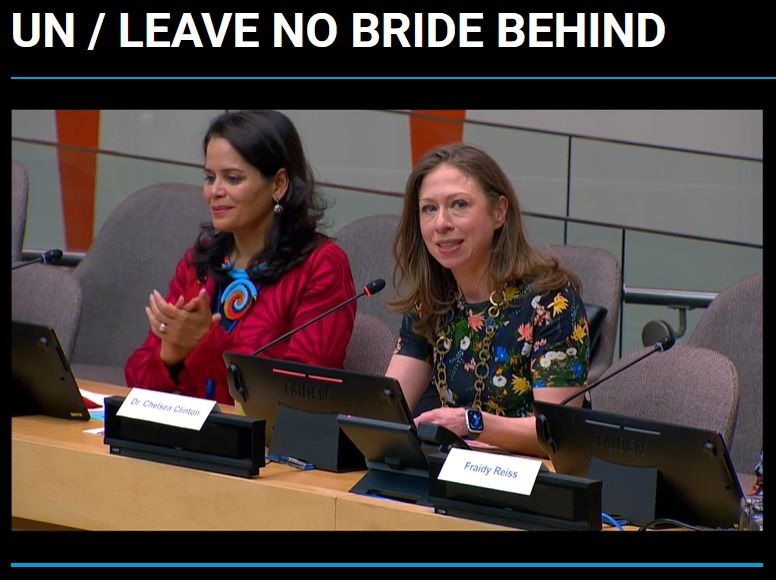Leave No Bride Behind – ECOSOC Chamber UN New York
March 19, 2025
A collaborative report by Judy Toll (SI Perth), Sarah Barnbrook (SI Melbourne) and Cherrie Power (SI Shepparton and SI Melbourne).
As delegates and advocates, we gather at pivotal moments like the recent workshop to discuss and take action on one of the most pressing issues affecting girls globally: child marriage. This event, co-hosted by the Permanent Mission of Sierra Leone to the United Nations, Unchained at Last, and various other international organizations, provided a platform for leaders and activists to collaborate on solutions to eradicate child marriage by 2030. It also underscored the need for stronger laws globally, including in Australia, where the legal age for marriage remains below the age of 18

Key Messages and Objectives:
The workshop underscored the urgent need to address child marriage as a global human rights violation. Dr. Sasha Mangoy, Sierra Leone’s Minister of Gender and Children’s Affairs, delivered an empowering opening remark, emphasizing the country’s achievements in reducing child marriage from 48% in 2008 to 30% in 2019. The core theme of the event, "No Child Left Behind," called for collective responsibility and a shared commitment to education, legal reforms, and community-based action. As Dr. Mangoy pointed out, public education, monitoring, and strong legal frameworks such as Sierra Leone's Prohibition of Child Marriage Act of 2024 are crucial in the fight against this harmful practice.
The Need for Legal Reform in Australia:
Australia currently allows marriage for girls as young as 16, with parental consent, and those under 18 must also seek court approval. This creates a legal loophole that exposes young girls to coercion and abuse. Advocating to raise the legal age of marriage to 18 in Australia is an important step toward protecting the rights and wellbeing of minors, especially young girls, by ensuring they are fully protected under the law before entering such a significant commitment.
Why Increase the Marriage Age to 18? The legal age for marriage in Australia should align with international standards that place the minimum age of marriage at 18. Marriage at a young age often leads to negative consequences, including:
- Health risks associated with early pregnancies
- Educational disruption and limited career opportunities
- Increased vulnerability to domestic violence
- Violation of the right to choose one’s future
By raising the marriage age, Australia can protect minors and ensure they have the time and resources to grow into adulthood before making such an important decision.
Speakers and Partnerships:
The event featured several key speakers, each sharing their unique perspectives and experiences in the fight to end child marriage. Here’s a list of the speakers along with a quote from each:
Opening Speaker - Dr. Sasha Mangoy, Minister of Gender and Children’s Affairs, Sierra Leone:
“The Prohibition of Child Marriage Act of 2024 is a critical step in our fight. It’s a commitment that requires the collective effort of governments, communities, and international partners to ensure no child is left behind in this journey to eradicate child marriage.”
Fraidy Reiss, Founder of Unchained at Last and survivor of forced marriage:
"We must be relentless in our fight against child marriage. No girl should be forced into a marriage against her will. It’s a violation of her rights, and it’s up to us to ensure that every girl has the freedom to choose her future."
At 19 years old Fraidy was forced into a violent and loveless marriage.
As a bride in New York, Fraidy was subjected to a virginity examination to ensure she was pure for her new husband.
Fraidy was forced to have unprotected sex on her wedding night and on a monthly basis thereafter. A lifetime of rape.
Fraidy loves her two daughters, but in saying that, did not consent to having them.
She was trapped for 15 years in this abusive forced marriage and when she finally managed to escape, her family retaliated, shunning her and declaring her dead.

Mona Sinha, Global Executive Director of Equality Now:
"Child marriage is a growing crisis fueled by deepening inequalities, climate change, and conflict. Every year, an estimated 12 million girls are married before the age of 18, and with that, they lose their education, safety, and future opportunities."
Sarah Hendricks, Director of Policy Programs at UN Women:
"Child marriage is not just a violation of human rights; it’s also a barrier to achieving gender equality. We must ensure that all girls have access to education, economic opportunities, and the right to make decisions about their own lives."
Saba Nishan, Coordinator of the African Partnership to End Violence Against Children, African Child Policy Forum:
"In Africa, we've seen success in setting the minimum age of marriage at 18 in most countries, but we must continue working on the intersection of rights, such as birth registration, to ensure these laws are fully effective."
Dr. Chelsea Clinton, Vice Chair of the Clinton Foundation:
"Child marriage is not just a problem in faraway countries, it's happening here in the United States too. We must continue to push our leaders to fulfill their promises to girls everywhere and ensure that every child is free to pursue their future on her own terms."
Addressing the Global Crisis of Child Marriage:
At the event, speakers also highlighted the significant progress in some countries, such as Sierra Leone, which recently passed a Prohibition of Child Marriage Act. However, there is still much to be done globally to protect the rights of girls. As Sarah Hendricks, Director of UN Women’s Policy Programme, pointed out:
"Child marriage must end. Our latest data says that it will take 68 years for that to happen. So not in 68 years, but it must end now. We are long past due from the promise made in Beijing 30 years ago." She emphasized the need for a whole of society approach, including commitment from governments, civil society, and international organizations.
Dr. Chelsea Clinton also spoke on the challenges in the United States, where child marriage is still legal in some states, saying:
"We’ve banned child marriage in 13 states and a number of territories. I won’t ask you to raise your cards because I think, you know, we have 50 states, and we know that 13 still leaves an extraordinary amount to go. We are not immune to the backlash that Sarah spoke about."
In California, there is no minimum age to get married, and you must be 18 to get a divorce. Girls under the age of 18 can’t seek help and support from Women’s shelters and are also often turned away by family, leaving these young girls alone with nowhere to go — an example of how critical legal reforms are in addressing the child marriage crisis. The need to align all countries with the minimum marriage age of 18 is paramount in ensuring that girls can make decisions about their future when they are ready.
Most people aren’t aware that child marriage is legal in the US. Between the years 2000 and 2021, some 307365 girls aged between 10 and 18 were married off to older men by their families without consent. A lifetime of enduring violent rape and bearing children. Losing access to their fundamental human rights.
Sex with a child under 18 is illegal in all parts of the US, but in 37 of the 50 states if they marry the child, sex is then legal.
Opportunities for Advocacy:
The workshop highlighted several key opportunities for continued advocacy:
Strengthening legal frameworks: Encouraging governments to set the minimum age for marriage at 18 without exception and ensuring the enforcement of these laws.
Community engagement: Partnering with traditional and religious leaders to shift harmful social norms and promote education and gender equality.
Empowering girls and survivors: Providing platforms for girls and women to lead, speak out, and drive change within their communities.
Investing in education and economic opportunities: Ensuring that girls have access to quality education, as it is proven to delay marriage and provide greater autonomy.
How Can We Advocate More?
As members of Soroptimist International and advocates for women's rights, we have a crucial role to play in advocating for the end of child marriage. Here’s how we can make a difference:
Support survivors: Share their stories and ensure they have access to resources and legal protection.
Engage local communities: Collaborate with community leaders to address cultural practices that perpetuate child marriage and promote girls' education.
Raise awareness: Use platforms like social media and public events to educate others on the impact of child marriage and the importance of legal reform.
Influence policy: Advocate for stronger laws and the enforcement of those laws, while ensuring that all girls, no matter where they live, have the right to choose their future.
Conclusion:
Together, we can make significant strides in eliminating child marriage and protecting the rights of girls. By amplifying successful examples like those from Sierra Leone and the Dominican Republic, and continuing to collaborate across borders, we are one step closer to a world where no girl is forced into marriage before she is ready.
Let us stand firm in our commitment to make a difference and ensure that the promises made at international forums like the Beijing Platform and the UN Sustainable Development Goals are kept. The time to act is now.
